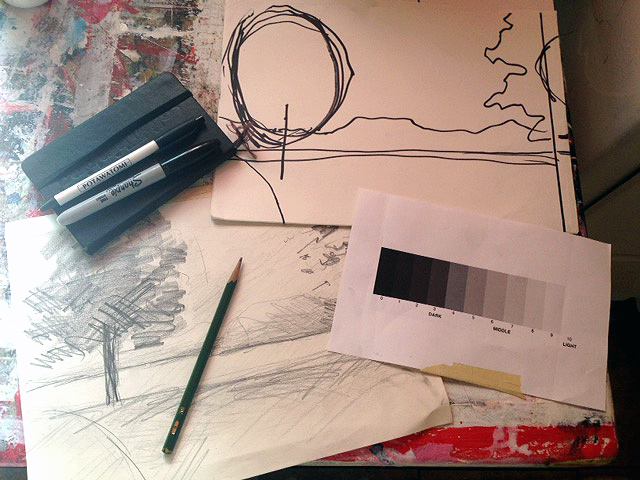Making art is a deeply personal process for an artist, and I would imagine every artist has their own rituals and routines. Of course, anything that becomes too routine fails to break new ground and so part of the process is always looking for a way to change things up. In reflecting on my own process, I can take note of the things that have perhaps become to ritualistic and also the things where some new depths could be explored.
I am typically a morning person. That is when my brain comes alive with energy, ideas, and inspiration. By sunset I am usually spent and not interested in use of mental energy. Despite being a morning person, coffee always helps. I decide over the first cup what I will be working on, what my goals for the day are. The best place to start is often at my image folder on the computer. I have hundreds of landscape photos I have taken over the years. I usually look for one I have not painted yet or have not painted in a while that strikes me in the moment.
Once I have a picture chosen I often do a quick sketch in my sketchbook, but not always. If I don’t quite feel ready to dive into a painting, I may tape down some paper to do a pastel drawing. This gives me a chance to play with color relationships for a while. As I work I often listen to podcasts. I listen to a wide range of talks and interviews on science, art, literature, philosophy, news, etc.
Eventually I get to painting. I select the size canvas or panel I feel is appropriate for the image. I usually put down a base coat of acrylic that is colored the compliment of whatever color dominates the photo I am working from. Then I put on my apron and gloves, lay out my paints and medium, and get to work. A painting sometimes takes hours, sometimes days. I work from back to front, blocking in the sky first, then middle ground, then foreground. I use a large painting knife. Once the canvas is covered I switch to smaller knives and occasionally brushes to build any desired detail.
When the painting is complete to my satisfaction, I sign it and leave it to dry. I clean off my palette completely. If time permits I will sit back and think about the painting and write about the experience of painting it. Over the next few days I will pass it several times. Sometimes I will change my mind and decide it is not finished after all. But usually I allow it to be as it is and move onto the next thing.

